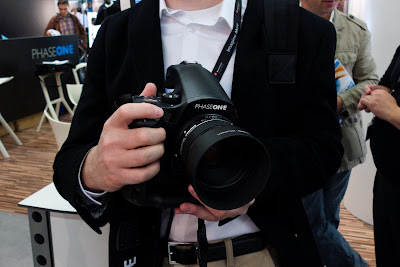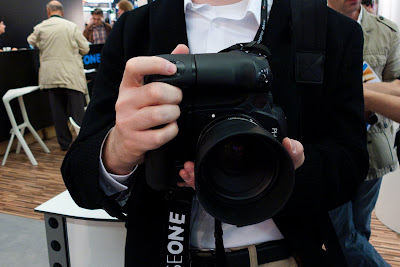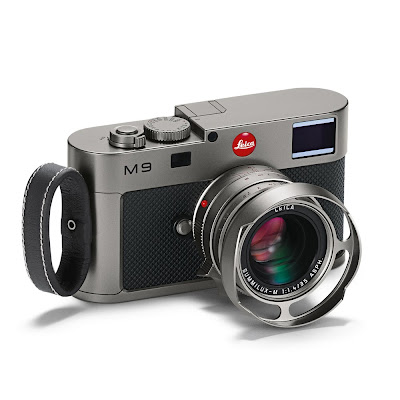-
Leica Store wrote a new post, First Impressions of the Leica APO-Macro-Summarit-S 120mm f/2.5 14 years, 1 month ago
I received my first demo Leica APO-Macro-Summarit-S 120mm f/2.5 this week and couldn't wait to take a few test shots to see what this lens is really capable of on the Leica S2. Unfortunately, I've been so busy […]
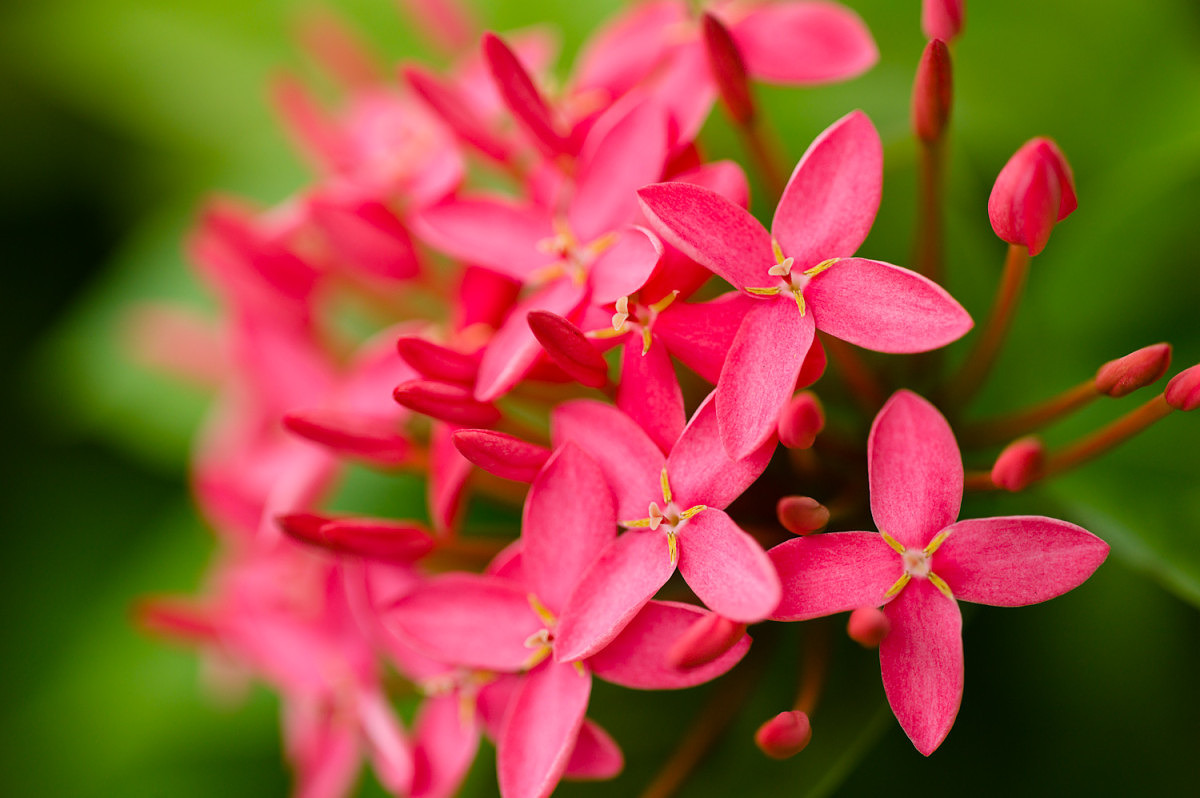
-
Leica Store wrote a new post, Photokina 2010: Day 3 – Pentax 645D and Fuji Finepix X100 14 years, 2 months ago
[COLOR=#333333][FONT=Trebuchet MS]I headed into the show a little late on Thursday. I had a couple follow-up meetings at Leica and I wanted to see a few things in between appointments. Specifically, I was interested in two cameras that a lot of people have expressed an interest in, as well as been requested to go see. First, I headed to Pentax to see their medium format DSLR.
Pentax 645D
The new 645D from Pentax has really stirred things up in medium format land. A 40 MP, integrated medium format digital camera with many features taken from 35mm DSLRs, and at a price just a couple thousand above the top Nikons and Canons, the Pentax 645D offers a really interesting value proposition. I've downloaded raw files from the Internet and read about the camera, but this is Photokina – I wanted to see and try the camera for myself. So far, from raw images that I've processed, I haven't been blown away with the image quality. Yes, there are a lot of pixels, but to my eye, there is a mushiness in fine details and a haziness in the overall image. I know a lot of people really want the Pentax to be the first affordable medium format DSLR with the latest technology, but to date, the images do not give me the impression of MF. Even the sample photos in the booth, printed at 13″ x 19″ were extremely lackluster. The same blurred details and the same “looking through a dirty window” effect prevailed. Obviously, this is a young product, and the first of its kind for Pentax. Only time will tell if improvements are made to the camera so that it can compete image-quality-wise with the likes of Phase, Hasselblad and the Leica S2.
The design is what you might expect. It is a large version of a consumer/prosumer DSLR. Lots of buttons, knobs and dials… 27 to be precise. This particular design approach is not to my personal taste, but many must like it as most of the Japanese camera companies do the same. The majority of the camera body is a large elongated box housing the mirror, shutter and digital components, with a lens mounted on the front and a handgrip coming out of the side. Most would agree this isn't the sexiest camera out there.
On the rear of the camera there is a 3″ hi-res LCD screen with 922K dots, surrounded by eight buttons, with access to menu, playback, delete, info display, WB, drive mode, flash control and picture styles. To the right there are four more buttons along with a four-way direction pad and a rear thumb wheel. The top of the camera is dominated by a large monochrome status LCD to the right of the tunnel-like viewfinder “tube” and a mode dial. There are also have controls for metering, focus mode, focus area, exposure compensation, and a row of four buttons that run along the edge of the camera's mirror box for SD card settings and bracketing. Metering mode and focus point selection are handled by two twist-type knobs than protrude out the back of camera, flanking the eyepiece. The menu itself has a lot of options and consumer regulars like D-range and picture styles for JPGs.
The 645D has 11 AF points, where most MF cameras have one or three at the most. Looking through the viewfinder to see the spacing, all 11 points are clustered together in the very center of the frame. Essentially, I would rather call this a large-area single point as I don't see this making much of a difference at all in real shooting. It is not like a 35mm pro DSLR that has points almost out the edges. I also found that at least in the show hall, the AF was hunting considerably and had some difficulty locking on to the Pentax rep behind the counter.One of the features I find pretty cool and one I've seen on cameras like the Nikon D3, is a 2D virtual horizon which can be displayed on the rear LCD. A circle is displayed with a horizon line, like in an airplane. Along the x and y axes are bar indicators showing how far off level the camera is. Nice. I'd love for this to be implemented on the S2.
Dual SD cards allow for greater capacity and additional security. The choice to go SD is an interesting one for a MF camera where file sizes can be quite large. Current SD cards cap out at 32GB and my comfort level for SD cards is currently at 16GB. I use these on my Leica M9, but I don't even bother with SD cards on my S2. Instead, I use 400X UDMA 64GB CF cards. The difference between 20MB/s and 90MB/s is significant, both when shooting as well as downloading. A dual CF setup would have been much better in my opinion.With a look through the viewfinder, I could tell that this was a medium format camera, but it was not as large or as bright as the competition. Phase, Hasselblad and Leica all seemed superior in this regard, but it is always tough to tell without a direct, side-by-side comparison.
An oddity that I discovered is that while the mirror is extremely well damped, the shutter appears not to be so. I tested this by placing the camera in mirror-up mode to feel the mirror and shutter separately. At the start and end of the shutter firing sequence, there was a definite pull that could be felt in your hand. It is always possible to lock up a mirror to eliminate vibrations, but if the shutter itself is the cause of vibration, this could rob the camera of any resolution advantage it might have over a Nikon D3x or Canon 1DsIII, especially in the vibration danger zone of 1/6th – 1/60th.Another little niggle was the lens mounting. I removed the 55mm lens and remounted it to get a feel for the mechanics. Not smooth. The lens felt as if it was dragging against the mount. To see how this should be done properly, see the S2, where you get a sense that everything is made to tight tolerances and designed to fit together. I know it's minor, but ergonomics and feel are what a photographer will deal with every day, even before the shots are produced.
For professionals, there is no tethered support. Most amateur users and many pros won't need this feature, but high-end fashion, commercial and advertising photographers depend upon reliable tethering.
I would be very interested in getting a hold of 645D to test, producing my own files and doing a direct comparison to the S2.
Fuji Finepix X100
Next up was Fuji's “Development Announcement,” the Finepix X100. I went by the booth to see the camera first-hand.Fuji must really have seen some something they liked in the Leica X1. Their X100 concept camera borrows more than just the first two letters of the model name. With a similar 12.3MP APS-C CMOS sensor and the same fixed focal length lens of 35mm (equiv), the Fuji seems to be squarely targeting Leica on this one.
Reading from the brochure I see things like “Made in Japan is tentative. Production plans are not finalized.” and “Sample photos are simulated images.” But, to Fuji's credit, they did have two semi-functional (as long as you didn't want to take a picture) prototypes.
I can't report on the weight or feel in the hand for two reasons. One, the two prototype units were both very securely bolted down to display poles. Two, I was told there were no sensors or optics in them either. The image shown on the rear LCD and through the viewfinder were courtesy of a video feed provided through a cable. So, these were not exactly working prototypes, but rather a proof of concept. And a rather good one at that.
The build quality seemed to be pretty good and the design cues were very Leica-like, albeit more retro ones, with more design similarities to an M3 than an M9. The silver chrome top plate, built-in flash where the frame line illuminator would go, the placement of the shutter speed dial, the black leatherette, even the top engraving.
Something that I really liked was the manual aperture control ring on the lens barrel, along with a manual focus ring. Both had a really nice smooth, mechanical feel, not a plastic-on-plastic feeling. Along with the analog shutter speed dial and exposure compensation dial on the top of the camera, I'd feel right at home.One of the main attractions of the camera is the super hi-res hybrid EVF. At 1.44 million dots, this will be the highest resolution EVF offered on any camera. At least using the demonstration video feed, the quality was amazing. I think (read: hope) within a couple of years this LCD technology will find its way into the majority of cameras.
Optical viewfinder
Electronic viewfinder
The Leica X1, with its excellent lens and 12.3MP APS-C CMOS sensor currently set the bar for image quality in a compact camera. We'll have to wait and see how the Fuji X100 stacks up image-quality wise when it eventually comes to market. Even the “sample” prints in the booth were not actually from the camera. With no sensor and no lens, it is kind of tough to take pictures, let alone compare image quality.
[/FONT][/COLOR]
-
Leica Store wrote a new post, More Photokina 2010 Updates on the way 14 years, 2 months ago
[LEFT][COLOR=#000000][FONT=Times New Roman][COLOR=#333333][FONT=Trebuchet MS]I am currently in Wetzlar, Germany attending the LHSA Annual Meeting. I left Cologne early on Friday and returned back to the show for several hours yesterday to catch all the areas I hadn't seen during the week. [/FONT][/COLOR]
[COLOR=#333333][FONT=Trebuchet MS] [/FONT][/COLOR]
[COLOR=#333333][FONT=Trebuchet MS] I will certainly be posting the remaining updates on Day 3 and 5, but am attending some all-day programming and bus tours without Internet access. So, please be patient and stay tuned. There is some pretty exciting stuff coming.[/FONT][/COLOR]
[COLOR=#333333][FONT=Trebuchet MS] [/FONT][/COLOR]
[COLOR=#333333][FONT=Trebuchet MS] I'd recommend following my Twitter feed to be alerted to updates posted on my blog.[/FONT][/COLOR]
Cologne at night – shot with Leica S2 and 70mm Summarit-S ASPH
32 sec @ f/11, ISO 160[/LEFT]
[/FONT][/COLOR] -
Leica Store wrote a new post, More Photokina 2010 Updates on the way 14 years, 2 months ago

[COLOR=#333333][FONT=Trebuchet MS]
Cologne at night – shot with Leica S2 and 70mm Summarit-S ASPH
32 sec @ f/11, ISO 160I am currently in Wetzlar, Germany attending the LHSA Annual Meeting. I left Cologne […]
-
Leica Store wrote a new post, Photokina 2010: Day 2 – A look at other medium format offerings 14 years, 2 months ago
[COLOR=#333333][FONT=Trebuchet MS]With all day yesterday spent at the Leica booth and with Hasselblad's announcements today, I figured I'd try to check out the S2's main competition.
First on the tour was Phase One. Their booth was much smaller and more basic for this show than they had in the past. Not too much product, not a lot of visitor space, mostly meeting tables. There was a live photo area with a model sporting biker wear and attitude, as well as a still life setup. The new Schneider 120mm T/S was being shown, but not the newly announced autofocus 120mm Macro or 35mm D. The main attraction seemed to be the V-Grip Air vertical grip for the Phase One 645DF (Mamiya 645DF). Sporting a serial number of C00001, I'm assuming this is the first one of its kind, but not the only one.
The grip feels to be made out of the same plastic and rubber material as the DF body and does match nicely with the camera. It is wide and tall, with a sharp recess for your fingers in the front. They've done a nice job of cutting out resting finger positions on the front as well as the rear for your thumb. I did find it a bit odd and non-ergonomic that the rear thumb dial and AF/AE button were placed so far to the right of your resting thumb position. Given the weight of the camera and torque exerted when holding the camera in vertical, you would lose your balance by moving your thumb out of the rear groove to the outside of the grip in order to access these controls.
The front shutter button placement is good, with a little function button accessible on the underside of the front of the grip which you can activate with your middle finger.
On the rear of the V-Grip are controls for switching the camera power source from the lithium battery inside the grip or the AA batteries inside the riser portion. This marks the first time that 645DF users can use the same battery type to power the camera as they do for the back, without having to carry AA cells. But of course, for those still yearning for nostalgia and extra weight and bulk, the AA option remains. I didn't notice if the camera top status LCD had a battery status, but I do think it would be a smart idea if the V-Grip/DF body could auto switch between battery types. When I picked up the camera with the grip on, the back was powered on, but the camera wouldn't turn on. There were no AA installed, but the selector switch was in the AA position. The camera powered on after the switch was flipped over to Li+, but this seems an unnecessary step to take, especially if there is no indication without physically removing the V-Grip from the camera to check for batteries.
To the right of the power selector switch is the thumb dial for attaching the unit to the base of the camera. Standard issue and no surprises here. To the right of that is a switch allowing for either standard or fast Profoto Air Sync.On the left-hand side is a flip-out access door, under which the lithium battery goes in. Also there is a dial control for the Air channel from 1 to 8 as well as off. A mini-USB port provides the user, for the first time, the ability to upload firmware to the camera without having to send the body in to service.
[LEFT]
The particular unit I had powered the camera, but the shutter release would not activate. I was instructed to use the camera's main release button instead and that this was just trade show quirkiness.
Holding the camera by the grip felt okay, but the camera is quite top-heavy in horizontal which is fine, but when rotated, exerts a fair amount of left-pulling torque on your right wrist. It is a similar feel to holding a Hasselblad H body with a heavy lens mounted. Fine for a short duration, but could start to be a strain if shooting for extended periods of time. For the price ($1290), the grip feels a bit plastic, but it does offer 645DF owners a good way to rid themselves of AA batteries, offers the unique Profoto Air triggering, and the ability to perform body firmware updates themselves. If previous Phase One marketing strategy holds true, I'm sure it will end up being bundled with a standard camera, back and 80mm lens for much less than if purchased separately.
I didn't shoot with the 120mm T/S lens or see the quality it produced, but I did hold it in my hands to get an idea of the size and weight. As mentioned previously, the lens is extremely large but very, very light. For those needing such a lens for field work, the weight will not be a problem, but some might find the bulk to be a factor. I'll be interested to see what kind of results this lens is capable of.
Hasselblad
Leaving Phase, I ventured onward and headed over to the Hasselblad booth. These guys always have a great stand at Photokina and this year is no exception. It also was a bit smaller than the one in 2008, but the size was compensated by the presence of a sweet Ferrari convertible and regularly scheduled runway models mugging for cameras. Compared to Phase, there were a lot more people packed into the booth looking at a lot more product. Hasselblad had no shortage of display product or helpful people to answer any questions.
I handled the H4D-40, 50 and 60, which are all basically the same, except for the sensor inside. I've used most of the HC lenses before and I am very familiar with the H3 body, so no surprises here. The main difference between the H3 and the H4 is True Focus, which is Hasselblad's clever way to compensate for focus shift during focus-and-recompose using accelerometers to record camera rotation during reframing and compensating focus on the fly before taking the picture. I think that Hasselblad should be applauded for bringing some ingenuity to the medium format party.I was very curious on the H4D60 to see how the “double-res” LCD looked, both relative to the “single-res” screen on every other H back or the same-sized S2 LCD. The new LCD offers some improvement in terms of resolution, but I still feel that the color saturation and contrast of the screen is lacking. It still looks a bit hazy, not as much as the Leaf Aptus II LCD, but not nearly as clear and nice as the Leica S2's screen. I read and hear a lot of complaints about medium format LCD quality, yet strangely, the manufacturers are still unresponsive to this request. Phase One seems to be the worst of the bunch, still offering an LCD that looks like it came from a Nikon D70 c. 2004.
I was also interested to see playback speed and zoom on the rear LCD of the H4D versus the S2. Preview images display in 1-2 seconds, so this is pretty quick. Hassy has certainly made some significant speed improvements on this latest generation of backs, but there is still about a 5-6 second delay when zooming in to 100% to check focus. The S2 by comparison zooms in to the image in real time, without delay.Hasselblad announced some new products for Photokina today. The first is a “new” camera, the H4D31. This is a new entry-level kit that combines the exact same back as the H3DII-31 with the latest H4 camera with True Focus. They are looking to sell this kit for 10,000 EUR, which should translate to about $13,000 USD, but US pricing hasn't been set yet.
The HC 50mm f/3.5 and the HC 120mm f/4 Macro have been redesigned. Both lenses look identical to the previous (current) models, except for the “II” designation in the name. All of the changes are internal. The 50mm brings an increase in resolution and corner performance, while the 120mm Macro improves color performance, eliminating axial chromatic aberration. As digital sensor increase in resolution and physical size, more and more demand is being placed on the lenses. It is nice to see Hasselblad focus on optical improvement rather than a software correction approach.
They also announced a 200MP virtual resolution camera, the H4D50MS. The MS stands for multi-shot, meaning that while remaining perfectly still, the sensor shifts in microscopic increments to introduce more information. The process of shooting six exposures takes about two minutes. Applications for this would be things like artwork reproduction where the subject, camera, and illumination source all remain consistent. Not so well suited for any subject which moves or where lighting can't be controlled precisely.And, for lovers of the V system, Hassy has a got a new back, the CFV50 featuring the same Kodak sensor found in the H4D50. This should be nice as the sensor is physically larger than the CFVII-39, giving some more utility to wide-angle lenses like the 40mm CFE-IF.
Last, but not least, Hassy is introducing a special edition Ferrari camera. Painted in Ferrari Red and limited to 499 pieces, price is “available upon request.” I didn't request it. See, Leica isn't the only company offering special edition cameras.
I also had never tried the 35-90 lens and I have been hearing good things about it. It's really, really huge. Not as bulky as the 50-110, but big. I'm not sure how comfortable I'd be carrying this around all day.
Leaf
From Hall 2.1 where Leica, Hasselblad and Phase One are located, I ventured to Hall 9 where I will be going tomorrow to look at lighting, supports, and other photo accessories. Amidst the sea of photo accessories and off-brand monlolights was the Leaf booth. I honestly couldn't believe this booth wasn't packed. The Leaf Aptus-II 12 has set a new level of resolution with 80 MP in a full-sized 645 chip, but the booth was quiet.
I spoke to product manager Yair Shahar, who couldn't have been nicer. He recognized me from my photo online and the two of us have crossed paths on online photography forums many times. It was nice to finally put a face to a name.He told me about the new Dalsa sensor in the Aptus-II 12. The sensor has a 5.2 µm pixel pitch and features next-generation imaging performance. They worked closely with Dalsa to develop this sensor and I get a sense that Leaf, and by association, Phase One, will have some period of time of exclusivity on the technology. Already, Hasselblad lagged for almost two years behind Phase One's P65+ with their H4D60, which has just recently come to market (even though it was announced at the last show). I expect to see a similar situation here. I asked about smaller sensors being offered with the 5.2 µm pixels. Yair seemed to feel that the goal has always been getting to full frame and that they should stay there.
We looked at some images on a computer screen from the new 80MP back. They do look like multi-shot images I have seen and that is Leaf's claim. The sample was a picture of a bunch of fabrics and there was no moiré. Every time I moved the image to scroll around, it Leaf Capture software would have to re-render that new section and the system was clearly dragging. Yair said that the support for the back is still in beta and he feels this is just an early software glitch. I was wondering if these kind of files were just too unwieldy for the iMac to handle.
I do wish that Leaf would put more effort into updating the camera interface, speed of operation, battery life and the quality of the LCD. They were one of the first companies making medium format digital backs and have made some significant technological advances. Faster processing, better LCD and more robust battery life would all be welcome by Leaf shooters. In the case of the new back, the LCD, interface and battery life remain the same as the rest of the lineup. This is not anything new for medium format backs and is not exclusive to Leaf. You could change the sticker on any Phase P back and impress your friends and clients – they'd never know your five-year old P25 isn't really a P65+.Leica – Something new
I stopped in at the Leica booth as I had some follow-up meetings. I saw a small still life diorama in a box with an S2 pointed at it, which was tethered to an adjacent PC, looking very much like a science fair display. The young lady who was running the demo is a student at Cologne University of Applied Science. Leica works closely with this school to develop both algorithms and talent. Many of the top engineers and product managers came from the school.
So, what was the science project about? High Dynamic Range, more commonly referred to as HDR. This got my interest, so I requested the full demo.
Working with a modified version of Leica Image Shuttle, a new HDR tab has been added. With a single click, the camera will first shoot one or two shots to analyze the scene and determine how many shots and with what exposure parameters are required to deliver the entire luminance range of the scene, then actually fire off the sequence automatically. Once the button was clicked, the camera went into autopilot and shot six frames with three stop spacing. Sure, anyone can do exposure bracketing then blend the resulting captures in Photoshop or Photomatix, but here is the best part of all: the resulting file is a 24-bit per pixel DNG file. Yes, 24-bit raw file with the same handling of any DNG from the S2. After the sequence was completed, a progress bar showing “merging” completed. We opened the file in Photoshop's ACR window and the image didn't look artificial as so often happens with tone mapping. We were able to white balance, adjust exposure sliders, etc. The scene had a clear light bulb in it with an exposed filament. The resulting photo had detail on the filament as well as detail in the dark patches of the color card. No user intervention was required. This tech rocks!
I spoke to the two people in the R&D department about my excitement with this technology. They said that it might be possible to add this technology into the firmware, so that all sequencing and processing is handled in camera. They wanted to know if I thought this would be a worthwhile addition. Let's just say that I voted emphatically YES.More to come tomorrow…..
[/LEFT]
[/FONT][/COLOR] -
Leica Store wrote a new post, Photokina 2010: Day 1 – Leica S System 14 years, 2 months ago
[COLOR=#000000][FONT=Times New Roman][COLOR=#333333][FONT=Trebuchet MS]
 [/FONT][/COLOR]
[/FONT][/COLOR]
[LEFT]Another Photokina has begun. Walking up the steps into the Koelnmesse and into Photokina felt great. Not only was it a beautiful day this morning, but the sheer amount of photo goodies awaiting you inside can boggle the mind and cause even the most seasoned industry veteran to get a little giddy with anticipation.My first stop, naturally, was Leica. Coming down the escalator into the usual spot of hall 2.1, the Leica booth was buzzing with activity and excitement. The M counter was swamped. The S counter was swamped. Hordes of people swarmed around the compact camera islands. Journalists were queued up to gain access to the press area. Leica employees (the ones with the red dot lapel pins) were manning their posts and obviously enjoying Leica's somewhat new found popularity.
After a few quick greetings, I made a beeline for the S system counter. I wanted to see the 120 macro again and see what else might be waiting to be discovered. Well, I was satisfied on more than one account. There were plenty of 120 Macro lenses to go around as well as the newly released multifunction handgrip.
The most I'd ever seen of the grip was a solid block mock-up. The grips that were on the cameras here were most certainly not mock-ups. I was surprised by the weight, or rather lack thereof. Made of aluminum and magnesium alloy, the grip is solid and sturdy but extremely lightweight. The textured rubberized covering is the same as that of the S2 itself. Somewhat of a surprise to me was the change from the one-handed quick release attachment method to the more tried-and-true screw-in approach with a large thumb wheel. I found out later that when putting the lever solution through quality assurance, Leica engineers were not satisfied with the security and reliability of the locking mechanism. They went back to the drawing board and redesigned the grip with a more robust solution. At first I was disappointed as this was always such a cool concept, but I suppose I would take a more mainstream approach rather than have my S2 fall to the ground while I was shooting vertical. Gotta have priorities, right?
The base of the grip has two tripod mounting holes, ¼”-20 and 3/8″, both with corresponding anti-twist holes. Also on the base in a somewhat unusual position is the switch to enable or disable grip control. It is recessed nicely and I highly doubt the possibility of any accidental switch flipping.On the left-hand side is a battery compartment door, with a nice metal turning latch. The door reminds me of the battery cover on the Nikon D3, except much finer construction and more sturdy. When you turn the release, the door flips down and reveals the battery, which sits flush in the case. Next to the battery is a metal push button, with releases the battery with the same clever safety feature of the camera's main battery. The cell pops out about a quarter of an inch and requires a short, soft inward press to fully release. This keeps batteries from inadvertently falling on the floor, or off a cliff (if you so happen to venture near cliff edges while changing batteries). The S2 will pull power from the battery in the grip first, then switch to the battery in the body. In Leica's testing, they found that the combined battery life with the grip was over 5,000 shots. Not bad!
On the right side of the grip are the shooting controls, similar to those on the S2. On the front, the same metal shutter release button. On the rear, the same clickable scroll wheel with a AE-L/AF-L button just to the left of the wheel. In the hand, the grip feels great for vertical shooting. The balance is just about perfect and in landscape orientation, with the extra volume on the base of the camera adding a nice steadiness. Also, with the grip attached, you can use the new hand strap. Very comfortable. I want one.
At the counter, I had a nice chat with Wanja Szypura, who is an image processing engineer in the R&D division at Leica. This is one of the best parts of Photokina. You will often find that the people showing you products at the counters are not sales staff, but rather those that are deeply involved with the design of the equipment itself. In addition to writing image processing algorithms for the S2's firmware, Wanja is the point person for the collaboration with Adobe. He verified for me that Adobe does in fact have two S2s systems, one is in California for the tethering team to work with and the other is in Seattle for the image processing team to work with. Just in our brief chat, it is quite clear that the relationship between Leica and Adobe is a strong and important one for both companies. He also mentioned that Leica will probably offer users ICC camera profiles for Capture One and Adobe will roll out lens profiles for ACR and LR most likely in the next release. All good news for S2 users.For further S2 enlightenment, I joined S2 product managers Stephan Schulz and Toni Felsner in the S2 studio inside the press area. Professional photographers were carrying out shoots in Leica's trade-show studio. Leica again partnered with German studio lighting company Briese to build and equip the studio.
Amidst the shoot, Stephan demonstrated the new Leica Image Shuttle software, which introduces a preview function. Click the little eyeball icon under the FPS button in Shuttle and a second free-floating window appears. In this latest version of Image Shuttle, a 2 megapixel image is sent over the USB connection immediately after the shot is taken. After about 1.5 seconds, the image pops up in the review window. While not high enough resolution to check critical focus, it is sufficient to judge lighting, expression (for people shots), exposure and color. The previewed image is extremely close to the final color rendering and looks pretty good. Stephan took my picture to demonstrate. Ideally, Leica is working towards allowing the user to use Image Shuttle for camera control and rapid preview, but still allow the direct tethering connection into Lightroom for DAM and image processing. I think this is a great solution, as the integrated design of the S2 allows Shuttle to control every setting in the camera remotely. Used combined with Key Lock, this could be a digital tech's best friend on a fast paced shoot. Then, combined with the speed increases and imaging tools in LR, the photographer or tech has a great tool.
On the subject of speed, one of the features we have been clamoring for is a compressed DNG. Well, the soon-to-be-released 1.0.1.0 S2 firmware allows the user to select losslessly compressed DNG files. This is not the same square root compression algorithm used on the M8 and M9, but a newly developed one that is 100% lossless.The S2's Maestro image processing chip allows the camera to execute much more advanced algorithms than possible using the M9's generic DSP. File size will vary between 35-50MB depending on subject matter. I didn't settle in for a timed test, but watching the photographer shoot and seeing the image display on the monitor, I think there was a speed increase. So, now we get slightly faster tethering with image transfers averaging 2.5 seconds per image as well as reduced storage demands on hard drives and CF cards.
The new firmware also has some substantial improvements in other areas as well. Here's a breakdown of what I have seen so far:- Option for compressed DNG files (explained above)
- Storage mode changes from External to Internal Sequential if USB cord is removed from the camera mid-session. Currently, the camera will remain in External storage mode. The new firmware automatically switches the camera from External to CF or SD internal storage.
- The new Clipping Definition menu option allows the user to define the thresholds for highlight and shadow warnings. You can set the shadow level from 0-20 and the highlight level to 200-255. Neat feature.
- When in Bulb setting on the shutter speed dial, by pressing the thumbwheel in, a control displays on the rear LCD allowing shutter speeds from 8 sec to 125 sec to be dialed in. This is really cool.
- Now the rear thumb button can be controlled more finely. Currently, in MF mode, the rear thumb button activates AF, but only in AFc. This can now be adjusted to be AFs or even add AE-lock at the same time. Good addition.
- Added electronic focus confirmation for use with adapters and manual focus lenses
- Refined autofocus (again), by making the AF active area dynamically larger for closer distances and smaller for further ones. This should help isolate subjects even when a background is just a few feet behind them when at middle distances.
- Added support for hand grip
Some hardware goodies, besides the grip and strap, were some real, honest-to-goodness CS lenses. No, I'm not kidding. I even got to shoot off a few frames with one. Stephan explained that they are tweaking the timing of the focal plane shutter and central shutter to coincide very close to each other. This will reduce the mirror/shutter blackout to a minimum. When asked when these will be available, I was told “Spring 2011”.
A physically small, but functionally big item was a split image/microprism focusing screen. Wow. This was perhaps the brightest, easiest-to-nail-focus screen I have ever used. The standard screen in the S2 is incredible, but can be challenging for manual focus. This one makes manual focus a dream. You can immediately and positively see the exact point of focus. I took a picture through the S2 viewfinder, but it doesn't quite do it justice.
 Saw the Pro Charger in action. Small, light, multivoltage with quick charging of two batteries, each with its own digital charge readout.
Saw the Pro Charger in action. Small, light, multivoltage with quick charging of two batteries, each with its own digital charge readout.
After the show and tell, we moved on to discuss lenses. Leica is putting an obvious emphasis on wide angle lenses for the S2. Adding to the brilliant 35mm f/2.5 will be a 24mm f/3.5 and a 30mm f/2.8. The decision to go with a 30mm when there already is a 35mm lens might seem a bit odd, but after Stephan explained the approach, it made good sense to me. The 30mm will be equivalent to a 24mm for full frame 35mm. The 35mm is a 28mm. Classically, photographers tend to choose either a 24 or a 28 for their wide angle work. They plan to leverage the existing design of the 35mm lens with some repositioning of the elements. What this will mean is that the 30mm will also be offered in a CS version, making it a great choice for wide-angle fashion shots. The 24mm, as discussed last summer, will be equivalent to a 19mm ultrawide. I haven't seen one at the show, and I don't really expect to. I do expect the 24 and the 30 to be available sometime next year.
In other lens news, Leica is in the process of designing adapters for other medium format lenses. Stephan confirmed that they have made some early prototypes of a Hasselblad V to S2 and a Pentax 67 to S2. There might be others in the works, but only the V and P67 adapters were confirmed. Things are looking up for the S system on all fronts it would seem.
In one of my meetings during the day I had the opportunity to try out the M9 Titan. The camera is really a work of art and looking through the viewfinder and its bright red frame lines, I felt like I was targeting a missile or the like. I took a picture through the viewfinder for good measure. I'm a bit tired to go into too much more detail on the M9 Titan right now, so for now, these photos will have to suffice.
Until tomorrow…..
[/LEFT]
[/FONT][/COLOR] -
Leica Store wrote a new post, Photokina 2010: Day 1 – Leica S System 14 years, 2 months ago
-
Leica Store wrote a new post, Photokina 2010: Leica Design Preview Event: Unveiling the M9 Titan 14 years, 2 months ago
I arrived in Cologne early this morning. The weather is amazing, with clear blue skies and temperatures hovering around 70 deg F. After the usual two hours sleep on the plane, I took a three-hour nap in the hotel. […]
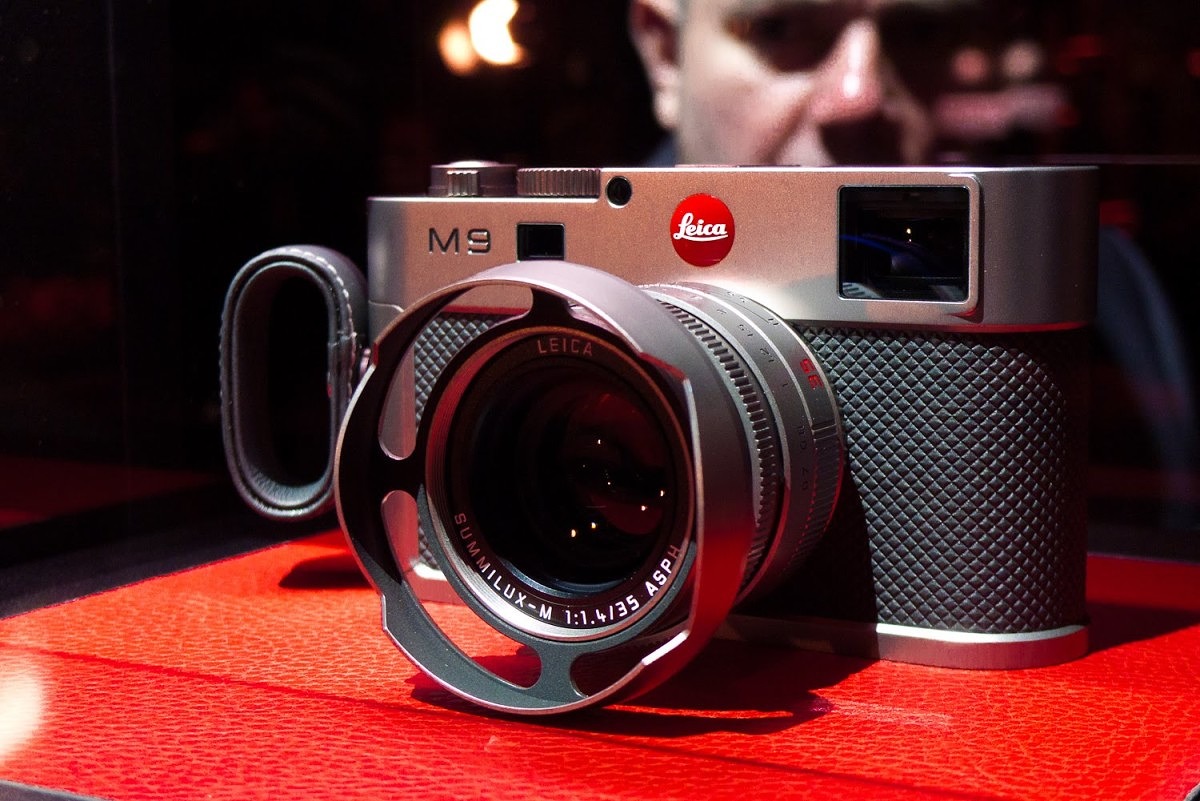
-
Leica Store wrote a new post, Stay Tuned for Full Photokina 2010 Coverage 14 years, 2 months ago
[COLOR=#333333][FONT=Trebuchet MS]

Photokina is the world's largest photo industry trade show. So large, in fact, that it is only held once every two years. With only two weeks before Photokina 2010 opens its doors, I am once again preparing to make pilgrimage to Cologne, Germany to blog about all the photo gear goodness I can get my hands on. I'll do my best to blog daily and provide the most accurate and in-depth information available online. No cut-and-paste press release filler here – I’ll have plenty of hands-on photos and gather information directly from product managers and engineers.Photokina is really too big to see everything, so I will be focusing on what I think are the most interesting products. Of course, being the Leica nut I am (and one of the largest Leica dealers in the USA), I will spend a considerable amount of virtual ink covering any announcements or new products at the Leica stand. I will have my trusty Blackberry with me and will be monitoring comments and emails on the show floor. If there is any specific product I should look at or questions I can answer, please send them my way and I will do my best to do so.
So, stay tuned!
[/FONT][/COLOR] -
Leica Store wrote a new post, Stay Tuned for Full Photokina 2010 Coverage 14 years, 2 months ago
-
Leica Store wrote a new post, Lightroom 3.2 Now Available: Support for Direct Tethering with Leica S2 14 years, 2 months ago

[COLOR=#333333][FONT=Trebuchet MS]Well, this was a pleasant surprise. I launched Lightroom a little while ago and was greeted with an update available message. Upon checking out Adobe's Lightroom Journal, I […]
-
Leica Store wrote a new post, GQ Taiwan Shoot with Leica S2 – Nic Roldan and Elsa Benitez 14 years, 3 months ago

[COLOR=#333333][FONT=Trebuchet MS]
Back in early May, GQ Taiwan contributing editor and photographerChiun-Kai Shih expressed an interest in using the Leica S2 on some upcoming shoots he had down in South […] -
Leica Store wrote a new post, Dale Photo Digital's Leica S2 Instructional Videos 14 years, 4 months ago
I'd like to introduce Josh Lehrer, a relatively new addition to our team at Dale Photo and Digital. He is a recent graduate of RIT in commercial photography and had been working in New York City as a photo […]
-
Leica Store wrote a new post, Taking the Leica Summarit-S 35mm f/2.5 ASPH and the S2 for a spin around the neighborhood 14 years, 4 months ago
The long-awaited Leica Summarit-S 35mm f/2.5 ASPH lens is finally shipping, with the first units going to customers this week. Many have hoped this lens would be one of the best wide-angle offerings for medium […]
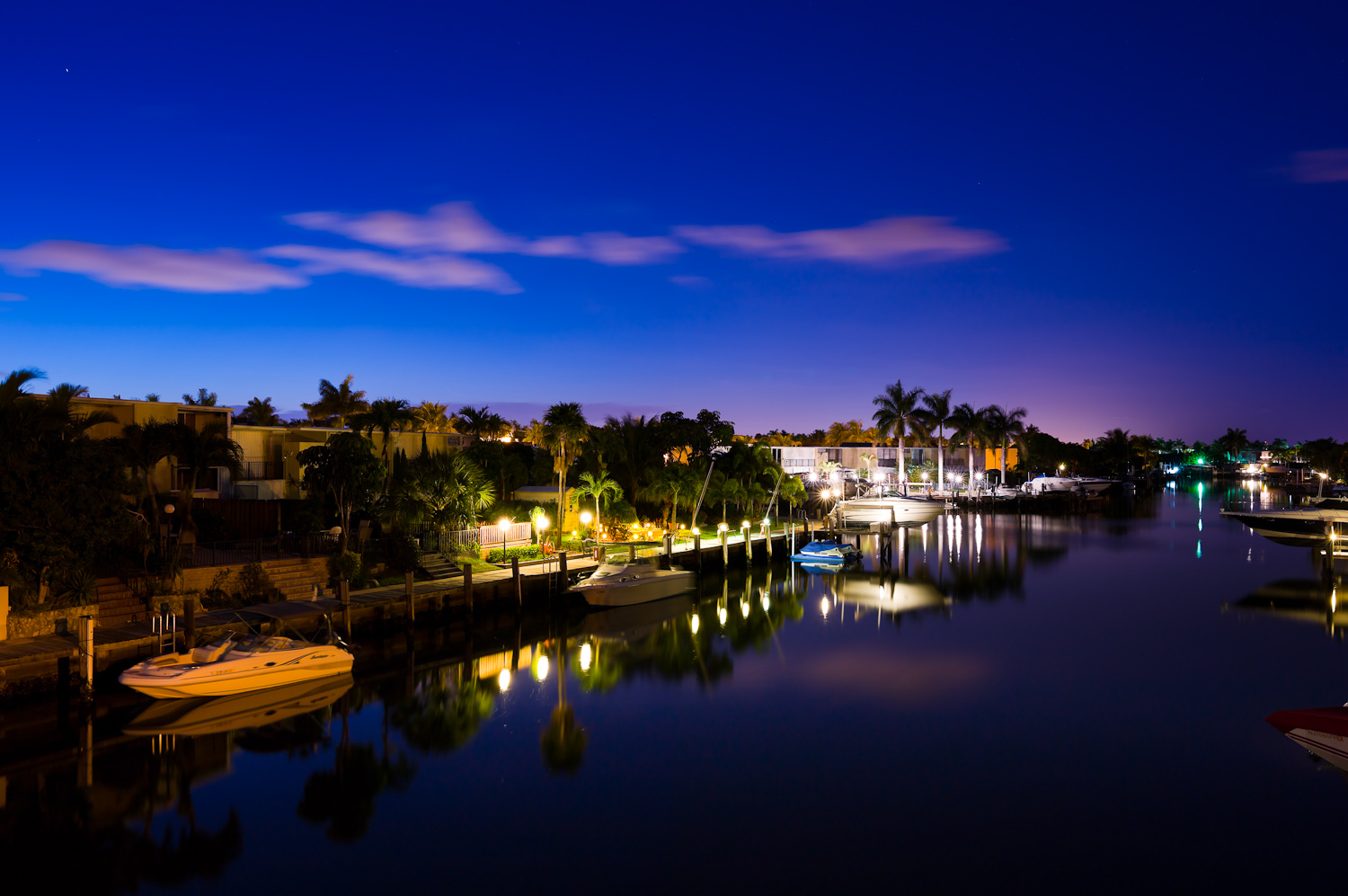
-
Leica Store wrote a new post, The Leica S2 meets Hasselblad V lenses 14 years, 6 months ago
Do not adjust your monitor. That is indeed a Hasselblad 40mm V lens on a Leica S2.
More to come….
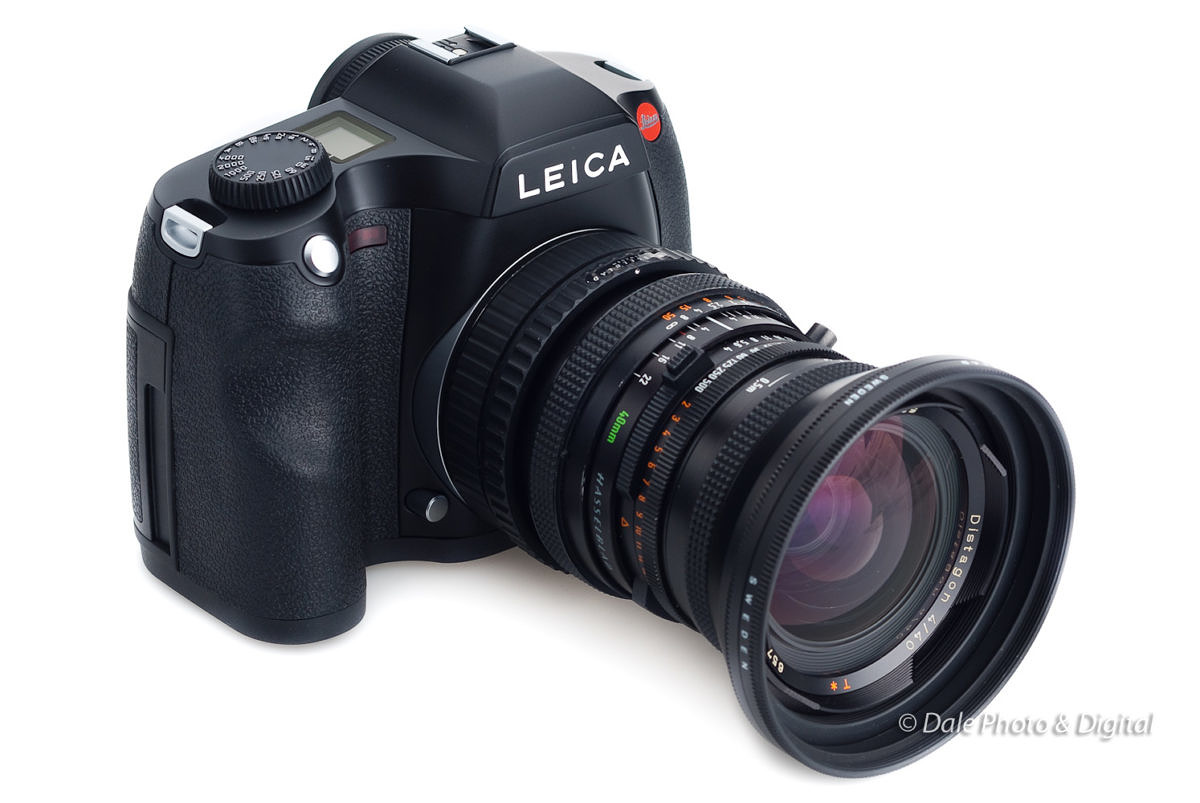
-
Leica Store wrote a new post, Using the Leica S2 at the LHSA Spring Shoot in Savannah, GA 14 years, 6 months ago
Two weeks ago I attended the 2010 LHSA Spring Shoot in lovely Savannah, GA. I've gone to almost every meeting since going to my first one four years ago. The LHSA (Leica Historical Society of America) has about […]
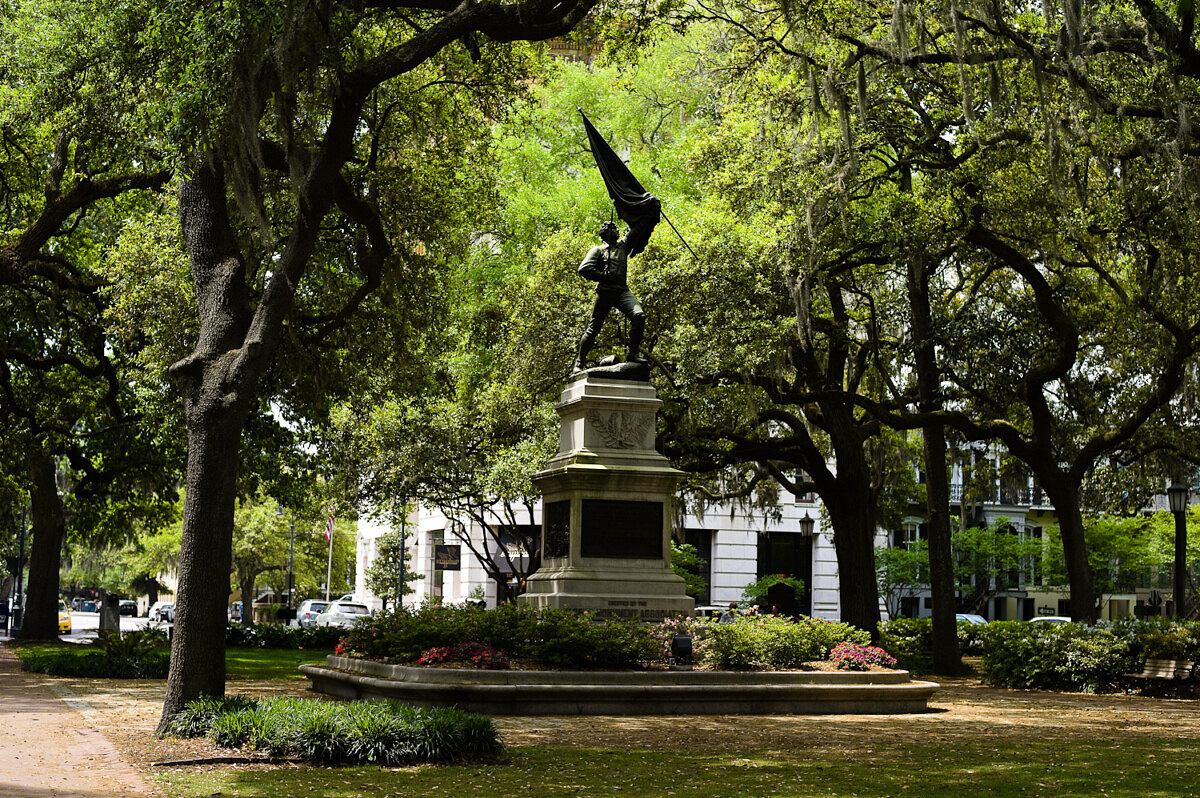
-
Leica Store wrote a new post, Details on S2 Firmware Update 1.0.0.16 14 years, 7 months ago
- Load More
































